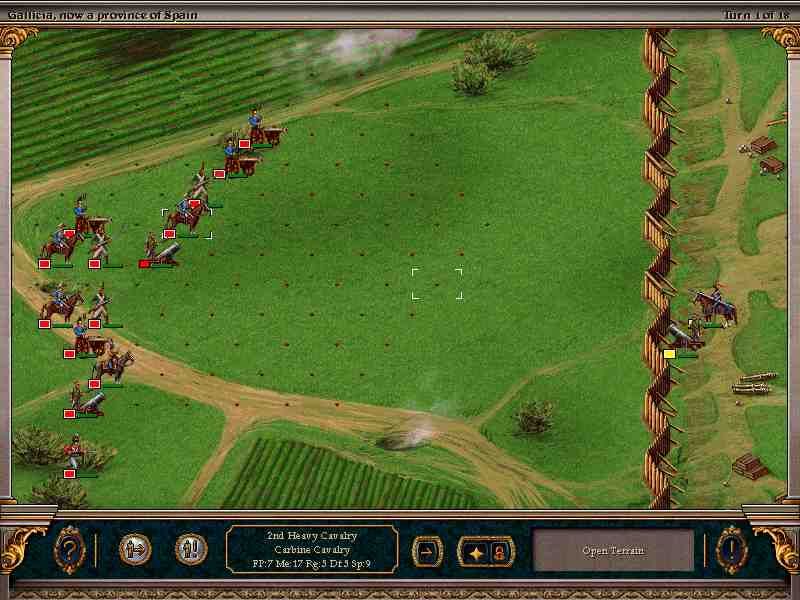Retro Replay Review
Gameplay
Imperialism II’s core gameplay revolves around grand strategy and empire management on a turn-based map. You begin by selecting one of the Old World powers and guiding its expansion from 1500 to 1850, balancing exploration, colonization, trade and diplomacy. Instead of relying solely on military conquest, the game demands that you build robust economic systems—managing resource production, supply chains and colonial outposts—to support your ambitions.
(HEY YOU!! We hope you enjoy! We try not to run ads. So basically, this is a very expensive hobby running this site. Please consider joining us for updates, forums, and more. Network w/ us to make some cash or friends while retro gaming, and you can win some free retro games for posting. Okay, carry on 👍)
Diplomacy in Imperialism II is more than an afterthought; it’s a crucial tool. You’ll negotiate trade agreements, forge alliances, manipulate rival nations, or subvert them through espionage and economic pressure. Colonial territories become commodities and bargaining chips, as you extract raw materials, levy taxes and even foment local unrest in competing colonies. Political influence, national prestige and domestic stability all factor into your path to supremacy.
When tensions boil over, the game shifts to a separate tactical battle screen where unit positioning and terrain exploitation determine the outcome. Cavalry charges, artillery bombardments and infantry formations each have unique strengths and vulnerabilities, demanding careful planning and adaptation. Whether defending a mountain pass or storming a coastal fort, these skirmishes offer a satisfying blend of micro-management and strategic foresight.
Graphics
Visually, Imperialism II reflects its era with detailed 2D sprites, isometric province maps and a desktop-map aesthetic. The strategic map is color-coded by nation, with clear borders and resource icons that allow you to instantly assess supply nodes, trade routes and military choke points. While not pushing contemporary graphical boundaries, the interface remains functional and straightforward.
The unit artwork and province icons are utilitarian yet charming, evoking classic strategy titles of the late 1990s. Urban centers, forts and resource sites each have distinctive symbols, helping you track development levels and colonial holdings at a glance. Menus and tooltips are information-rich, though navigating nested economic screens can feel cumbersome until you familiarize yourself with the layout.
On the tactical battle screen, animations are simple but effective: cannon fire flashes, cavalry charges clatter across the ground, and infantry lines shift as orders are executed. Zoom levels let you appreciate terrain details like forests and hills, which can influence engagement outcomes. While battles rarely dazzle with particle effects, they offer enough visual clarity to make each skirmish engaging.
Story
Imperialism II doesn’t follow a linear storyline or scripted campaign. Instead, it generates an emergent, player-driven narrative shaped by your geopolitical decisions. Will you prioritize trade over warfare? Forge a maritime empire or concentrate on continental holdings? Each playthrough births new rivalries and alliances, creating a personalized historical saga.
Historical flavor permeates the game through dynamic events and diplomatic opportunities. You might receive an envoy offering a clandestine trade deal with a reluctant prince, or face a sudden siege prompted by rising nationalism in your colonial provinces. These scenarios add texture, forcing you to adapt policies or deploy military units on the fly.
Your path—from nascent colonial power to global hegemon—unfolds uniquely every time. The ebb and flow of economic booms, political intrigues and battlefield triumphs weave an overarching tale that feels authentically “Age of Exploration,” even without a scripted narrative arc. Veteran players often recall specific diplomatic gambits or dramatic battles years after the fact.
Overall Experience
Imperialism II offers a deeply rewarding grand strategy experience for those willing to invest time in learning its mechanics. Its robust economic and diplomatic systems set it apart from mere war simulators, giving you multiple avenues to achieve dominance. Replayability is high, thanks to random New World maps and the choice of historical or fully randomized Old World settings.
On the flip side, the interface can feel dated, and new players may stumble through early micromanagement tasks. The AI occasionally makes suboptimal diplomatic choices or tactical blunders in battle, but these quirks often lead to unexpected opportunities or humorous reversals of fortune. Multiplayer adds another layer of intrigue, pitting human minds against one another in long, thoughtful campaigns.
In sum, Imperialism II: The Age of Exploration remains a must-play for strategy enthusiasts craving depth, historical immersion and strategic variety. Its learning curve may deter casual gamers, but those who persevere will find themselves hooked by an evolving geopolitical sandbox that stands the test of time.
 Retro Replay Retro Replay gaming reviews, news, emulation, geek stuff and more!
Retro Replay Retro Replay gaming reviews, news, emulation, geek stuff and more!









Reviews
There are no reviews yet.